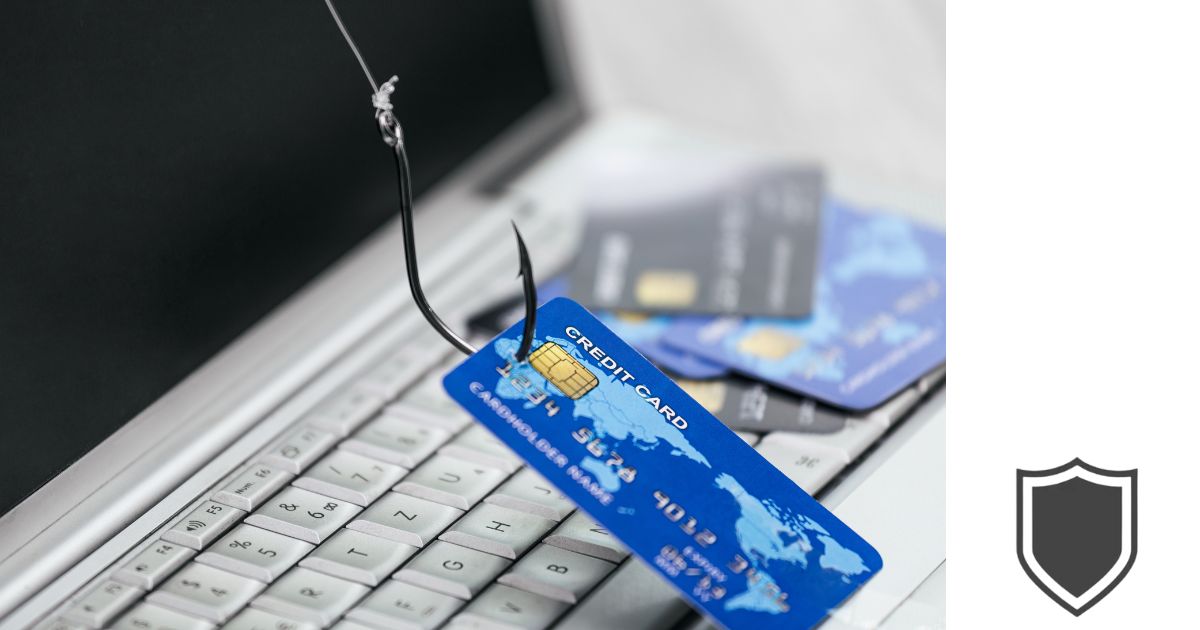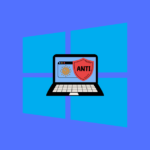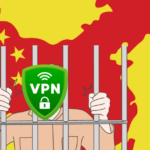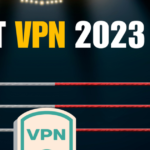Greetings, wise users of the internet! I’m Dr. Edward Baldwin, and I’m here to delve into the misleading realm of phishing and the strategies you can employ to outwit it. Our focus today is on “Beware of Bait: The Top Phishing Checker for Wise Internet Users.” In the vast ocean of the digital world, phishing acts as a continuous surge of deception, with emails or messages pretending to be reputable sources to snare your sensitive data.
As cybercriminals become more sophisticated, the importance of having a solid phishing checker becomes paramount. It’s not just about avoiding the obvious scams; it’s about having a keen eye for the subtleties that even the most vigilant can sometimes miss. This guide is all about equipping you with the best tools and knowledge to recognize and deflect these digital threats.
Whether you’re a seasoned net navigator or just starting to chart these waters, understanding the mechanics behind phishing and how to effectively use a phishing checker is crucial. So, let’s set sail and explore how to keep your digital journey smooth and secure.
Table of Contents
Understanding Phishing

In my experience, understanding the threats posed by phishing is the first step in protecting myself and others. Let’s break down what phishing is, examine the various types of attacks, and uncover the common techniques phishers employ.
What Is Phishing?
Phishing is a deceptive strategy used by cybercriminals to obtain sensitive information. It involves tricking me into providing my personal data, such as passwords, credit card numbers, and other valuable details.
Types of Phishing Attacks
- Email Phishing: The classic method where I receive emails pretending to be from legitimate organizations asking for sensitive information.
- Spear Phishing: More targeted, this involves emails that are customized to seem like they are from someone I know or a company I frequently interact with.
- Smishing and Vishing: These attacks happen via SMS (smishing) or voice calls (vishing), where I’m prompted to disclose personal information or download malicious software.
Common Phishing Techniques
- Spoofed Email Addresses: Here, the sender’s address is cleverly altered to make it seem like the email is coming from a trusted source.
- Urgent Requests: Emails or messages that create a sense of urgency, prompting me to act quickly and without due diligence, often to my detriment.
Phishing Detection Tools

In today’s online landscape, it’s essential to utilize robust phishing detection tools to protect against deceptive attempts to gather sensitive information. These tools come in various forms, such as email security solutions and AI-based systems, each serving a unique role in phishing defense.
Email Security Solutions
I find that email security solutions are critical in intercepting phishing attempts before they reach the inbox. Platforms like Avanan provide comprehensive protection by scanning incoming emails for suspicious links and indicators of phishing. Additionally, solutions like Guardz offer automated responses to detected threats, ensuring that potential breaches are handled promptly.
Website Verification Services
Verifying the legitimacy of websites is a fundamental step in safeguarding against phishing. A valuable tool for this purpose is the Phishing Link and URL Checker from EASYDMARC, which can analyze web links in real-time to determine if they’re malicious. By pasting a questionable URL into such a service, I can quickly assess its safety before proceeding further.
Browser Extension Checkers
Browser extensions serve as an excellent frontline defense, offering real-time alerts when I navigate to potentially harmful sites. They work by cross-referencing the sites I visit with databases of known phishing URLs, providing immediate warnings that help me avoid inadvertently sharing my personal information.
AI-Based Detection Systems
AI-based detection systems represent the cutting edge of phishing defense, utilizing machine learning to identify threats that traditional methods might miss. These systems continuously learn from new phishing tactics, evolved to detect even the most sophisticated attacks. Thanks to the power of AI, I can enjoy an extra layer of security that adapts to constantly evolving threats.
Best Practices for Phishing Protection

To safeguard against phishing attacks, I focus on three core strategies: empowering my team with knowledge, enforcing robust security policies, and deploying cutting-edge technological defenses.
Educating Employees
I prioritize cybersecurity education, ensuring that my team can recognize the signs of phishing. This includes identifying suspicious emails with unusual greetings, grammar mistakes, and urgent calls to action that demand personal or financial information.
- Training Sessions: I hold regular employee training sessions to go over the latest phishing tactics and prevention techniques.
- Simulation Drills: I use mock phishing attacks to provide practical experience in identifying and reacting to potential threats.
Implementing Strong Policies
Clear policies are the backbone of my organization’s cybersecurity posture. I establish guidelines that dictate how to handle and verify emails, especially when they contain links or requests for sensitive information.
- Verification Procedures: For any unexpected requests, I enforce a mandatory verification step before proceeding.
- Password Management: Strong password policies, including regular updates and the use of multi-factor authentication (MFA), are essential.
Using Advanced Security Measures
Utilizing sophisticated security solutions allows me to stay one step ahead of phishers. I implement filters to catch potential phishing emails, along with monitoring systems to track suspicious activities.
- Email Filters: I configure these to help filter out potential phishing emails based on known patterns and indicators.
- Anomaly Detection: By monitoring for unusual account behavior, I can quickly identify and respond to indicators of a breach.
Analyzing Phishing Checker Features

Choosing the right phishing checker involves careful consideration of various features. I’ll take you through key aspects such as their accuracy, user experience, performance, and integration capabilities.
Accuracy and Reliability
When I evaluate phishing checkers, the first thing I look for is accuracy and reliability. A quality checker should have a high detection rate of phishing attempts while minimizing false positives. It’s crucial that it can discern between legitimate and deceptive emails effectively, using sophisticated algorithms and constantly updated threat databases.
User-Friendliness
Next, I consider the user-friendliness of the software. This includes assessing the intuitiveness of the interface and the ease with which users can report suspected phishing attempts. The goal is for even those with minimal technical expertise to navigate the tool without feeling overwhelmed.
Speed and Efficiency
Speed and efficiency are also paramount. A phishing checker should perform quick scans of emails and websites, delivering prompt feedback on potential threats. This means efficiently analyzing links, attachments, and email content without slowing down the system or interrupting workflow.
Integration with Other Systems
Finally, the checker’s ability to integrate with other systems is a significant factor. It should seamlessly fit into existing security setups and email services. Good integration allows for more robust protection and centralizes cybersecurity efforts, which is something I highly value in phishing prevention tools.
Phishing Checker Reviews and Comparisons
In my quest to provide accurate insights, I’ve thoroughly reviewed various sources and user feedback to give you comprehensive information on phishing checkers.
Expert Reviews
Experts often praise Avanan for its ease of deployment and integration with cloud applications, highlighting its ability to protect sensitive corporate data. On the other hand, Guardz, with its free trial option, is acknowledged for its cloud-based security scanning and automated responses that encompass endpoints, cloud data accounts, and email systems. Notably, Evilginx2 is recognized for its effectiveness in capturing login credentials and session cookies through man-in-the-middle attack frameworks, making it especially useful for targeting users of prominent online services.
User Testimonials
User reviews play a crucial role in assessing the real-world efficiency of phishing checkers. For example, many users commend Avanan for its one-click deployment and seamless integration with enterprise cloud applications. Guardz is often praised for its comprehensive coverage and user-friendly interface. Meanwhile, users point out that Evilginx2’s advanced capabilities are advantageous for those with a technical background looking to simulate sophisticated phishing attacks.
Comparative Analysis
When looking side by side, it’s essential to differentiate each phishing checker based on specific features:
- Deployment: Avanan wins with its one-click setup.
- Scope of Protection: Guardz offers an extensive range of security covering multiple systems.
- User Targeting: Evilginx2 stands out for targeting specific online service users.
Each tool has strengths tailored to different organizational needs and risk profiles. For instance, Avanan is ideal for enterprises seeking a solution with minimal setup complexity, whereas Guardz is suited for organizations prioritizing a broad spectrum of threat detection.
Implementing a Phishing Checker

Before diving into the technical details, it’s crucial to understand that a phishing checker is a significant defensive tool in the ongoing battle against cyber threats. It helps in detecting phishing attempts, ultimately safeguarding sensitive information.
Setup and Configuration
Setting up a phishing checker starts with choosing a reputable solution that integrates smoothly into my existing email infrastructure. I ensure to:
- Check if my email service is compatible with the phishing checker.
- Follow the provider’s guidelines for installing software or plugins.
- Customize the settings to optimize the detection rates, which usually involves setting thresholds for flagging emails as suspicious.
Ongoing Management
Once the phishing checker is operational, ongoing management is key. I regularly:
- Update the software to ensure it recognizes the latest phishing tactics.
- Review analytics to adjust filters and improve accuracy.
- Conduct employee training to complement the software, reinforcing the importance of recognizing and reporting potential threats.
| i. Regularity | ii. Action Taken |
|---|---|
| Daily | Monitor alerts |
| Weekly | Analyze reports |
| Monthly | Update configurations |
Troubleshooting Common Issues
In my experience, common issues with phishing checkers typically include false positives or missed phishing emails. To troubleshoot these, I:
- Look at the email headers for discrepancies in the sender’s address.
- Adjust sensitivity settings if legitimate emails are being caught.
- Share missed phishing emails with the provider for them to enhance their detection algorithms.
Remember: No system is flawless; continuous tuning helps maintain a high level of security.
Regulatory Compliance and Standards
When considering phishing checkers, I’m acutely aware of the importance of regulatory compliance and standards in maintaining robust cybersecurity measures.
Adhering to Privacy Laws
For me, adhering to privacy laws is paramount. I ensure that the phishing checker I recommend not only detects phishing attempts but also complies with data protection regulations such as the GDPR and HIPAA. This means it must handle sensitive data correctly and respect user consent.
- GDPR: Requires consent for data processing and mandates prompt breach notifications.
- HIPAA: Demands safeguards for protected health information (PHI) and restricts its disclosure.
Meeting Industry Benchmarks
Meeting industry benchmarks is more than just a best practice; it’s a commitment to excellence. A best-in-class phishing checker should meet standards such as ISO/IEC 27001 for information security management.
- ISO/IEC 27001: Enhances data security through risk management processes.
- Benchmarks include:
- PCI DSS: Essential for companies that process credit card information.
- NIST: Offers guidelines for federal agencies and contractors to improve cybersecurity.
Understanding Compliance Requirements
Understanding the various compliance requirements can seem daunting. Still, the right phishing checker should simplify this complexity. Compliance requirements can vary depending on the sector and type of data handled, but a robust solution helps businesses understand and meet these obligations.
- Regulatory Requirements:
- Financial Services: GLBA ensures companies safeguard consumer financial information.
- Retail: PCI DSS compliance protects payment card data.
By maintaining a keen eye on these areas, I help ensure the phishing checkers I work with offer not just security, but also compliance with crucial regulations and standards.
The Future of Phishing Checkers
As phishing threats evolve, so too do the tools that protect us. I’ll explore how phishing checkers are advancing to meet future challenges.
Technological Advances
Machine Learning: I’ve seen growing integration of machine learning algorithms that analyze patterns and detect anomalies indicative of phishing attempts. Such systems continuously learn from new data, improving over time.
Artificial Intelligence (AI): Companies are now leveraging AI to simulate phishing attacks, enhancing their tools’ ability to recognize and stop advanced threats that humans might miss.
Predicting Trends
Data Analytics: By compiling and analyzing past and current phishing data, I expect phishing checkers to become adept at predicting future trends. This predictive capability could alert users to potential threats before they become widespread.
Threat Intelligence Sharing: Phishing checkers will likely become more interconnected through databases that share indicators of phishing, helping to rapidly disseminate knowledge of new tactics across platforms.
Innovations in Phishing Detection
Real-time Analysis: I anticipate real-time scanning features will become standard in phishing checkers, providing instant feedback and reducing the window of opportunity for attackers.
Customized Simulations: Tools like PhishFlip, mentioned in my research, indicate a move towards customized simulations based on real phishing messages, making employee training more relevant and effective.
The Final Word
And that brings us to the end of our journey through the treacherous waters of online deception. This phishing checker guide has armed you with the knowledge and tools to detect and deflect the sophisticated scams of today’s cyber tricksters. Remember, the internet is an ever-changing landscape, and staying vigilant is key to navigating it safely.
As you continue your digital journey, keep the principles and practices we’ve discussed in mind. Regularly update your phishing checker, stay informed about the latest scam tactics, and always think twice before clicking on links or sharing personal information. By being proactive and cautious, you can enjoy the vast resources of the internet without falling prey to its hidden hooks.
Stay safe, stay savvy, and remember: when it comes to phishing, a little caution goes a long way. Until next time, keep a sharp eye out for those digital baits!
Best Phishing Checker FAQs

I know how overwhelming it can feel to navigate the landscape of phishing detection tools and strategies. Here, I’ve compiled straightforward answers to some of the most commonly asked questions to help you stay secure.
What are the top tools to effectively detect phishing attempts?
My experience points towards several reliable tools including Mimecast, Proofpoint, and PhishTank. These platforms are known for their robust phishing detection capabilities, leveraging real-time databases and user reporting to identify threats.
How can you verify if a site is part of a phishing scam?
I always recommend using website verification services like Google’s Safe Browsing Transparency Report. By entering the site’s URL, I can quickly ascertain if Google has flagged it as suspicious.
What features should a good phishing detection tool include?
A good tool should have real-time scanning, a comprehensive database of known phishing sites, and the ability to analyse email headers and URLs for signs of phishing. I find that tools offering detailed reports on the attempted attacks are particularly helpful.
Are there any cost-free solutions for checking phishing links?
Yes, there are free resources available. I’ve used PhishTank and VirusTotal, which allow users to submit URLs to check their legitimacy.
What is the most reliable sign that an email could be part of a phishing attack?
In my experience, unsolicited emails that request sensitive information, have mismatched URLs, or contain poor grammar and spelling errors are clear indicators of phishing attempts.
Can you recommend any phishing simulation tools that are available for free?
Certainly, tools like Gophish or the Social-Engineer Toolkit (SET) are great options for conducting phishing simulations. These help in understanding and preparing for potential phishing scenarios without any cost.
- Amazon Email Phishing: How to Identify and Avoid Scams - May 16, 2024
- Malwarebytes vs McAfee: Decoding the Ultimate Antivirus Battle - May 16, 2024
- Best Antivirus for Windows 10: Expert Recommendations for 2023 - May 15, 2024









